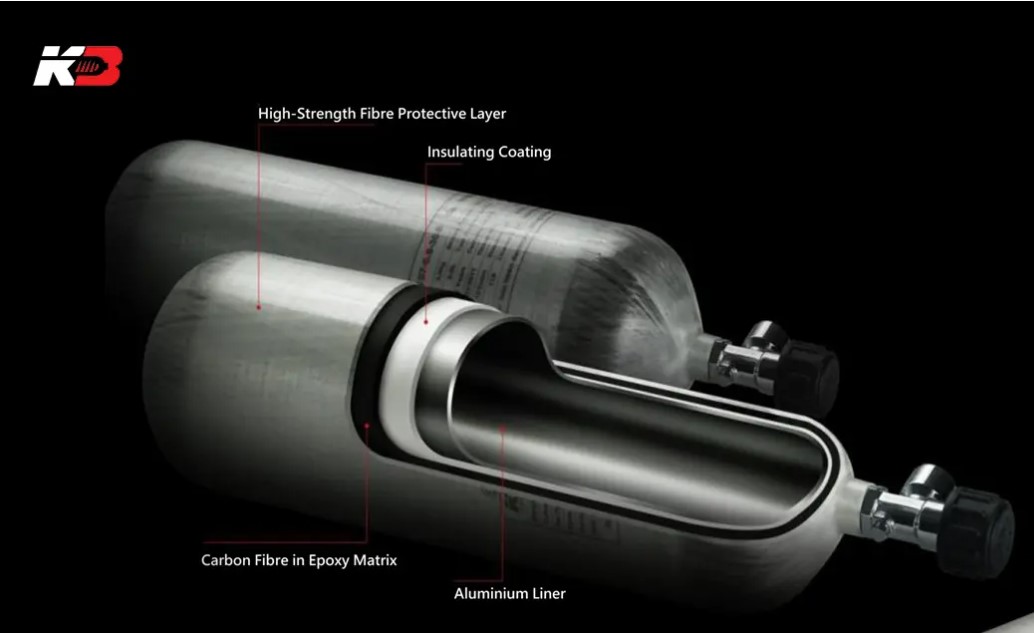Inflatable rafts have long been a favorite for adventure seekers, professional rescue teams, and recreational boaters due to their portability, durability, and ease of use. One of the most innovative features in modern inflatable rafts is the self-bailing system, which automatically removes water that enters the boat, making it ideal for whitewater conditions. The effectiveness of these rafts often relies on key components such as carbon fiber composite cylinders, which store the compressed air needed to inflate the raft. This article delves into how inflatable rafts work, the benefits of self-bailing designs, and the role carbon fiber composite cylinders play in inflating and maintaining the raft’s structure.
Understanding Inflatable Rafts
At their core, inflatable rafts are flexible boats made of tough, tear-resistant materials like PVC or Hypalon. Unlike traditional hard-hulled boats, these rafts rely on air to provide buoyancy and structure. The main components of an inflatable raft include:
- Air chambers: These are individual sections that are inflated separately to provide buoyancy.
- Valves: Designed to allow air to be pumped into the chambers and sealed tightly to prevent leaks.
- Inflatable floor: In modern designs, particularly self-bailing rafts, the floor is also inflatable, creating a solid platform for passengers.
The air pressure in these rafts is critical to maintaining their shape and stability on the water. This is where carbon fiber composite cylinders come into play.
Carbon Fiber Composite Cylinders: The Source of Air
Carbon fiber composite cylinders are lightweight, durable storage tanks designed to hold compressed air at high pressures. These cylinders are often used in conjunction with inflatable rafts to store the air needed to inflate the chambers. Carbon fiber’s high strength-to-weight ratio makes it an ideal material for these air tanks. Not only are they lighter than traditional steel or aluminum cylinders, but they also offer superior durability and can withstand high pressure without compromising safety.
Key Features of Carbon Fiber Composite Cylinders:
- Lightweight: Carbon fiber composite tanks are significantly lighter than their steel counterparts, making them easier to transport and handle.
- High Pressure Capacity: These tanks can store air at pressures as high as 4500 PSI, ensuring that there is enough compressed air to fully inflate the raft’s chambers and maintain the necessary buoyancy.
- Durability: Carbon fiber is resistant to corrosion and impact damage, which is especially important in harsh, outdoor environments.
When it comes to inflating an inflatable raft, the air from the carbon fiber composite cylinder is released into the raft’s air chambers through a series of valves. The compressed air expands rapidly, filling the chambers and giving the raft its shape. This inflation process is quick and efficient, allowing the raft to be deployed rapidly in emergency situations or for recreational use.
How Self-Bailing Rafts Work
A self-bailing raft has an innovative design that allows it to automatically remove any water that enters the boat. This feature is especially important for whitewater rafting, where waves and splashes constantly bring water onboard.
The design of a self-bailing raft includes an inflatable floor that sits above the base of the raft. Around the edges of this floor, there is extra fabric, forming a gap between the floor and the outer walls of the raft. This gap allows water to flow out of the raft while preventing it from accumulating inside.
Here’s how it works in detail:
- Inflated Floor: The self-bailing raft has an elevated, inflated floor that creates a rigid surface for passengers to stand or sit on. This design is similar to an air mattress, providing stability while still being lightweight and portable.
- Drainage Holes: The raft’s floor has small holes, often located near the edges, which allow water to escape. These holes are small enough that the raft remains stable and passengers stay dry, but large enough to let excess water drain out.
- Continuous Bailing: As water enters the raft from waves or splashes, it flows toward the edges, where it is automatically drained out through the gaps between the inflatable floor and the outer walls. This continuous process keeps the boat relatively dry and prevents water from pooling inside.
This system is especially beneficial in rough waters, where waves can flood a traditional raft. By automatically removing water, self-bailing rafts improve safety and stability, allowing users to focus on navigating the water rather than constantly bailing out water.
The Role of Carbon Fiber Cylinders in Inflatable Rafts
In a self-bailing raft, the carbon fiber composite cylinders are essential for inflating the chambers and maintaining the air pressure that keeps the raft afloat. These cylinders store a large amount of compressed air in a small, lightweight container, making them easy to carry and deploy.
Here’s how carbon fiber composite cylinders contribute to the operation of the raft:
- Quick Inflation: In an emergency situation or when setting up the raft for recreational use, the carbon fiber cylinder can be attached to the raft’s air valves. The high-pressure air from the cylinder rapidly fills the raft’s chambers, inflating the entire raft in minutes.
- Sustained Pressure: Once the raft is inflated, the air pressure inside the chambers must be maintained to ensure stability and buoyancy. Carbon fiber cylinders are designed to store enough air to inflate the raft fully and keep it at the optimal pressure for extended periods.
- Ease of Transport: Due to their lightweight design, carbon fiber cylinders are easy to transport along with the inflatable raft. This is especially important in rescue operations or outdoor adventures, where mobility and quick deployment are crucial.
Advantages of Inflatable Rafts with Self-Bailing Systems
The combination of inflatable raft technology with self-bailing systems and carbon fiber composite cylinders offers several key advantages:
- Portability: Inflatable rafts are much easier to transport than traditional hard-hulled boats. When paired with lightweight carbon fiber cylinders, the entire setup is compact and easy to carry to remote locations.
- Durability: The materials used in modern inflatable rafts, including PVC and Hypalon, are highly resistant to punctures, abrasion, and UV exposure. Carbon fiber composite cylinders add to this durability by providing a tough, corrosion-resistant solution for air storage.
- Safety: The self-bailing system ensures that water is continuously removed from the raft, reducing the risk of the boat becoming waterlogged or unstable. This is especially important in fast-moving or rough waters.
- Efficiency: The use of high-pressure carbon fiber cylinders allows for rapid inflation and ensures that the raft remains inflated and buoyant throughout its use.
Conclusion: The Synergy of Modern Materials and Design
Inflatable rafts, particularly self-bailing designs, have become a staple for water-based activities due to their versatility and ease of use. The incorporation of carbon fiber composite cylinders into these rafts has further enhanced their performance, allowing for rapid inflation, sustained buoyancy, and improved durability. Whether for recreational whitewater rafting or professional rescue operations, inflatable rafts with self-bailing systems and carbon fiber components offer a reliable and efficient solution for staying afloat in even the most challenging environments.
By combining lightweight materials, advanced design features, and practical functionality, these rafts continue to set the standard for safety and convenience on the water.
Post time: Sep-24-2024



